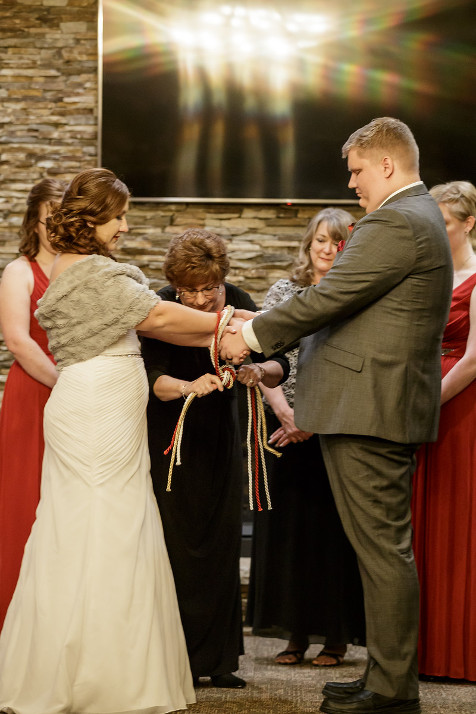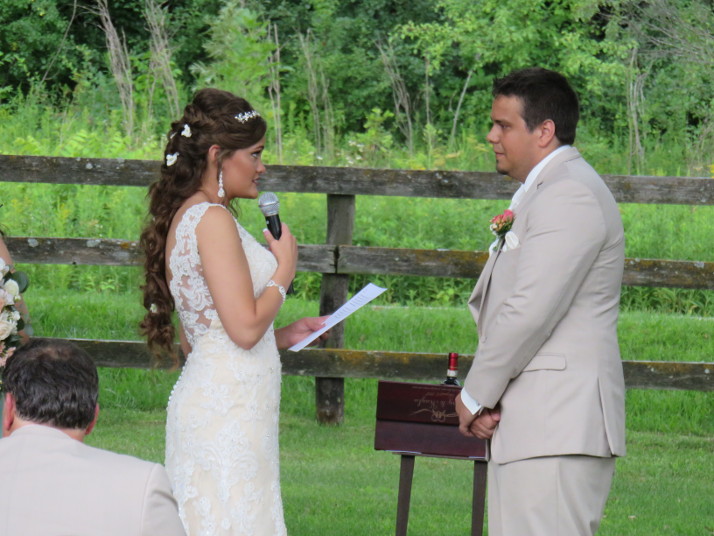Handfasting Rituals: What’s Old is New Again
Handfasting rituals have been used to recognize and celebrate couples’ commitments to each other across hundreds of years and thousands of miles. First documented in the 16th century in Scotland and used to mark a betrothal or engagement, handfasting today is used as a unity ritual in a wedding ceremony. It is a visual and physical act the signifies the commitment and union of the couple. The handfasting ritual is the genesis of the phrase “tying the knot” in relation to marriage.
There are a number of ways to perform modern handfasting rituals. In all of them, the couple joins hands which are then gently bound together. Once you clasp hands, though, the actual wrapping and tying of your hands can happen any of the following ways:
- A single cord or sash can be wrapped and tied around your hands by the celebrant as they explain the significance of the binding.
- Alternately, you can have one or more people assist with the binding while the celebrant takes a narrators role. Couples often choose their parents or siblings or honor attendants for this special role in their ceremony.

- Yet another approach to handfasting rituals is to use multiple ribbons or cords placed across your hands by people of your choosing. These ribbons can be used to signify wishes for your marriage going forward. Once all the ribbons are placed, they are tied together in a single knot, gathering the wishes up together. One couple marrying shortly after marriage equality passed in the US had seven friends use ribbons the color of the Pride rainbow, and individually extended their wishes. There wasn’t a dry eye in the room.
At the end of handfasting rituals you simply slip your hands out of the cord, sash or ribbons without untying the knot. That knot now symbolizes your marriage which, it is hoped, will be a long and happy one.
No matter which approach you prefer for handfasting rituals, they are wonderful ways to demonstrate your union and to involve important people in your ceremony. Pick the option that speaks to you, and have fun making it unique and representative of your love for each other.

